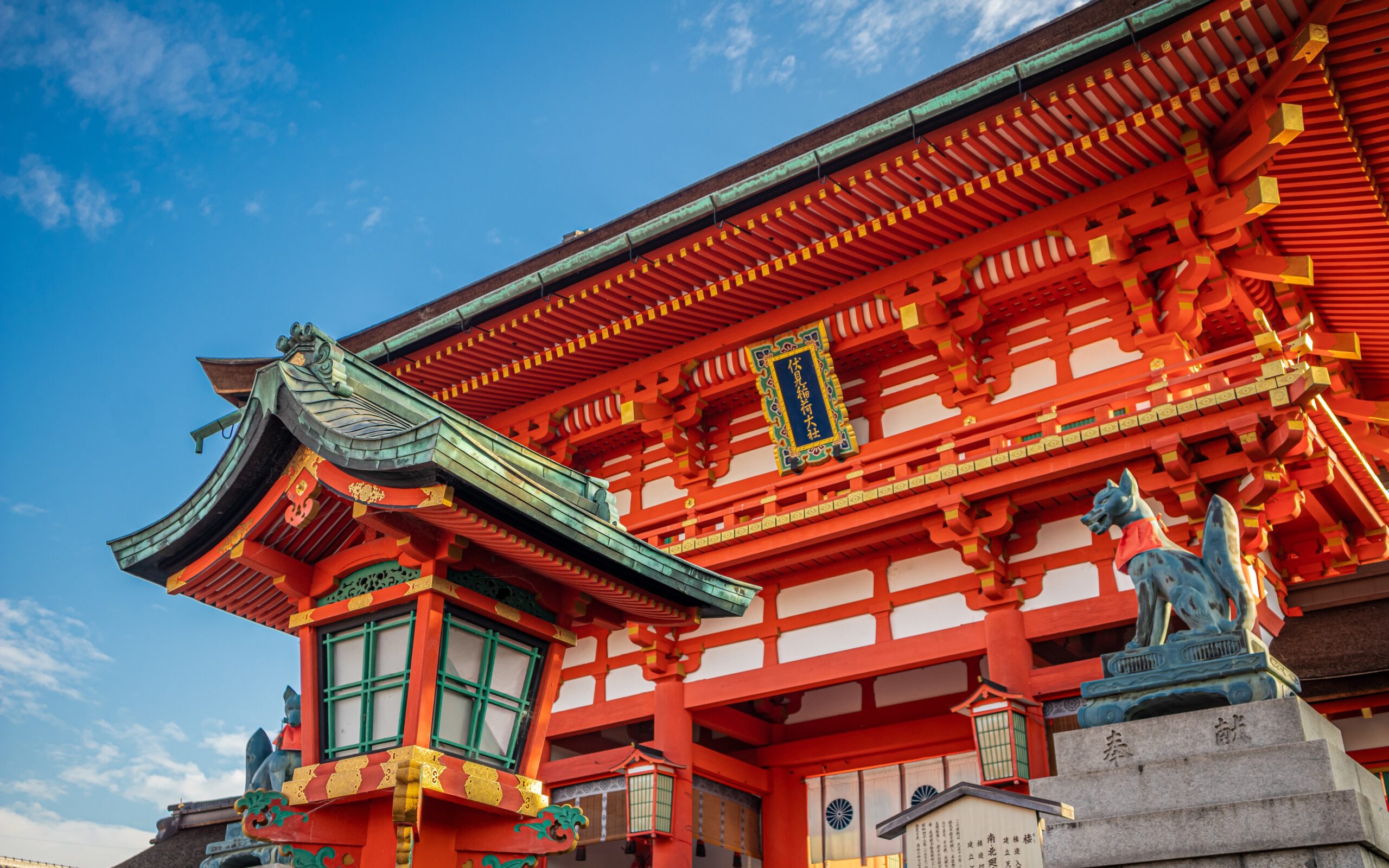
Hot Spots To Visit While In Japan
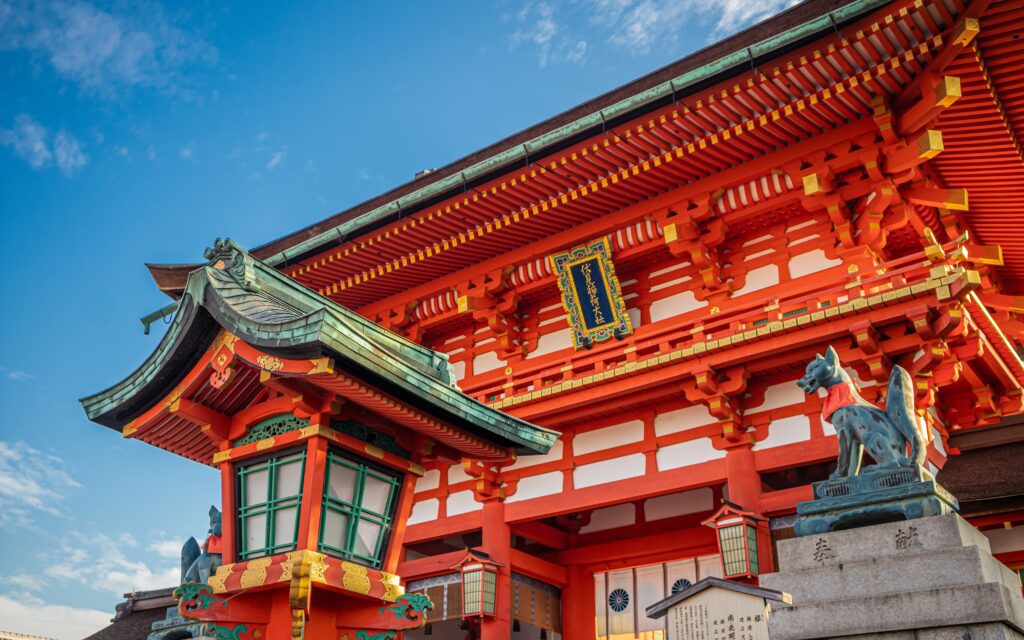
Courtesy of Photo by Alejandro Barba on Unsplash
Japan is known for onsen hot springs and kabuki baths, all-night neon-lit dance parties, anime, sushi (one of its most famous culinary exports), traditional arts, tea ceremonies, calligraphy, flower arranging, Geishas, and Buddhist temples. Japan’s legacy of gardens, especially cherry blossom trees, and poetry are among the many things you can find here. Japan is also home to more than a dozen UNESCO World Heritage sites which makes it one of the hottest spots to visit in the world.
Here are some places and things to do while in Japan:
Hiking In Japan

Courtesy of Kamikochi.org
The Japanese Alps is one of the most popular places to visit while in Japan. Hiking in Kamikochi is a fundamental experience that one should give themselves while visiting. The mountain views are remarkable, the hiking trails are easily accessible, and the snow monkeys seen along the way give you all those Japanese mountain vibes that you can only get in this gazing destination. From Kamikochi bus terminal, you can enjoy strolls in the Kappa-bashi aka the Kappa bridge. It’s best to ask your driver to drop you off at Taisho Pond and walk along the Azusa River for just over an hour to reach Kappa-bashi. From there, you can walk another hour or so to the smaller Myojin Pond. You can take many photographs as you walk along the trails. If you are a more serious hiker, there are a couple of challenging routes to enjoy as well.
Towards the end of your Japanese Alps experience, locals and visitors can soak their sore muscles in an onsen, which is a hot spring. It’s very popular in Kamikochi. Hirayu is one of the biggest among the five onsen towns. If you want to extend your time in Kamikochi, you can spend the night in the National Park. It’s one of the best ways to soak up the scenery with a more layback experience with a few day-trippers in the area. You can always check out the official Kamikochi website which has more details on spas, campsites, and other experiences in this region. Kamikochi is closed from November 16 to mid- or late April. In April, cherry blossoms and snowy peaks are seen. October is the most popular month to go, especially when the season transitions to fall. The autumn foliage is picturesque. If you’re in Hirayu, there are a couple of checkpoints where you can take a bus. Nohi Bus is a site where you can check for schedules and prices. You might not find many bus companies that can take you far out into the Alps like Matsumoto, Tokyo, Osaka and Kyoto.
Click here for prices to Kamikochi Nishi-itoya Mountain Lodge
The Scarecrow Village Of Nagoro
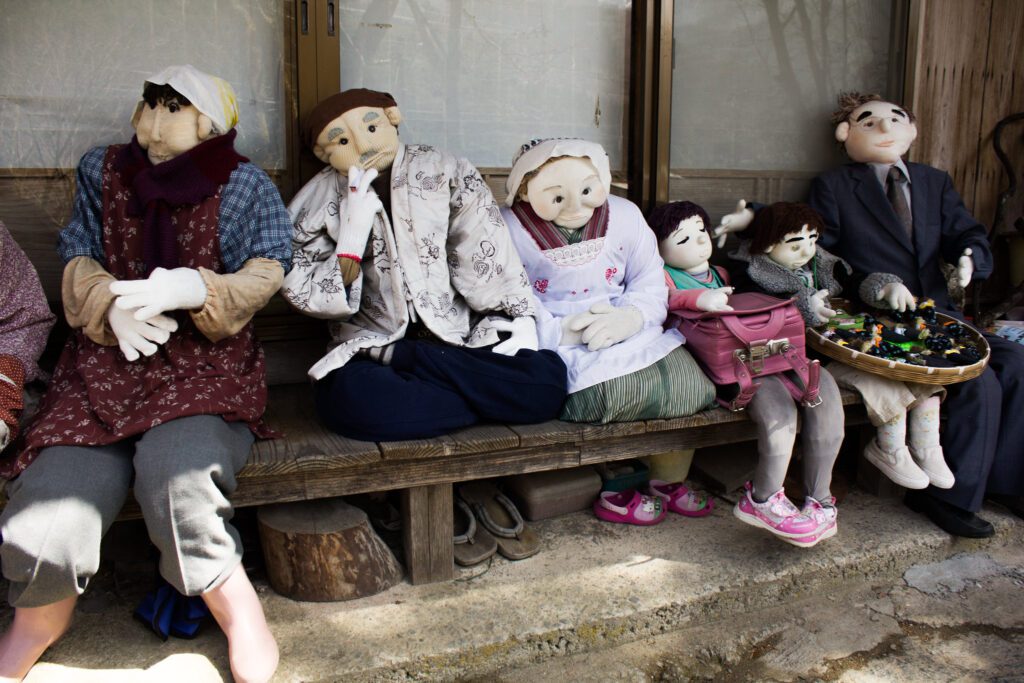
Courtesy of GaijinPotTavel.com
A remarkable thing to experience in Japan is visiting to Nagoro. Nagoro is a small deserted village in the Iya Valley, located in the Tokushima Prefecture on Shikoku. Back in the day, Nagoro had many workers who lived there. Eventually, these people left the village to find work in the city. One woman stayed in the village and decided to replace all the former villagers with scarecrows, so this is the main reason a person visiting can find scarecrows everywhere. There are buildings in the area which are inhabited by scarecrows, as well. You can even find some scarecrows while waiting for the bus while in Nagoro. For most, visiting the scarecrow village is a weird thing to do while in Japan, but it’s a fun experience to know you can visit a village that has scarecrows everywhere. The village is known to be located in the middle of the forest and is quite difficult to get to. Buses only drive here on weekends.
Attend A Bon-Odori Festival
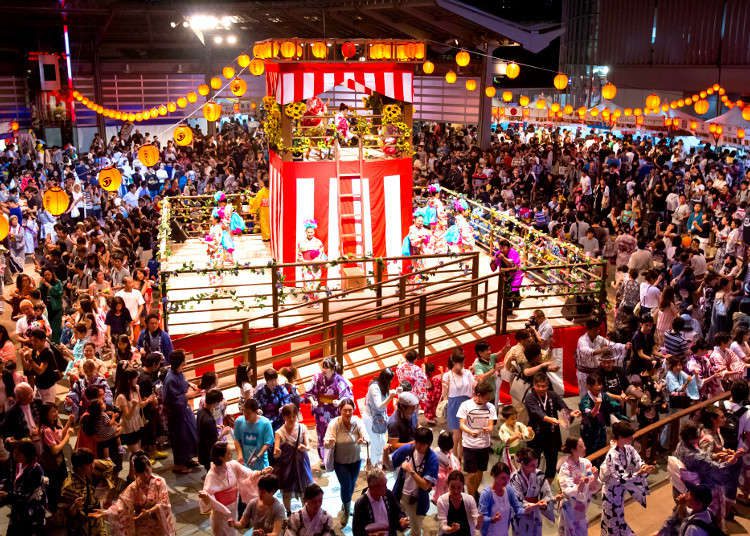
Courtesy of LiveJapan.com
If you are a music fan, attending a Bon-Odori festival can definitely give you a traditional Japanese experience. Bon, which is known as Obon, is a Japanese Buddhist custom to honor the spirit of one’s ancestors. It is a family-based custom that often comes with a dance, known throughout Japan as Bon-Odori. Bon is celebrated on the 15th day of the seventh lunar month, which turns out to be 15th August in 2019. Bon-Odori is always in summer — the seventh lunar month is in July or August — people who attend dress in traditional Japanese summer clothing: a yukata or a light kimono.
The festival has one central stage made of wood and metal, where musicians and performers start off the celebration. Around the stage, people dance in circles along to the folk songs of different regions in Japan. You can expect surrounding the stage: food stalls, rides, summer games and other food or fun-related activities while enjoying the celebration.
Dine With Robots

Courtesy of Viator.com
Visiting the Robot Restaurant in Tokyo is exceptionally fun and one of the most memorable things you can do while in Japan. The restaurant is located in Shinjuku, which is known to be a fun tourist trap. Your experience while dining in this spot in Tokyo is dancing robots, live performances by actors, lots of neon lights, glowsticks, robot fights and dancers everywhere. Electro J-Pop music is blasted from the surround system while in the restaurant.
It’s recommended to book your tickets in advance as it is very popular in Japan.
Click here to purchase priority lane Robot Restaurant tickets.
Watch The Sumo Wrestling
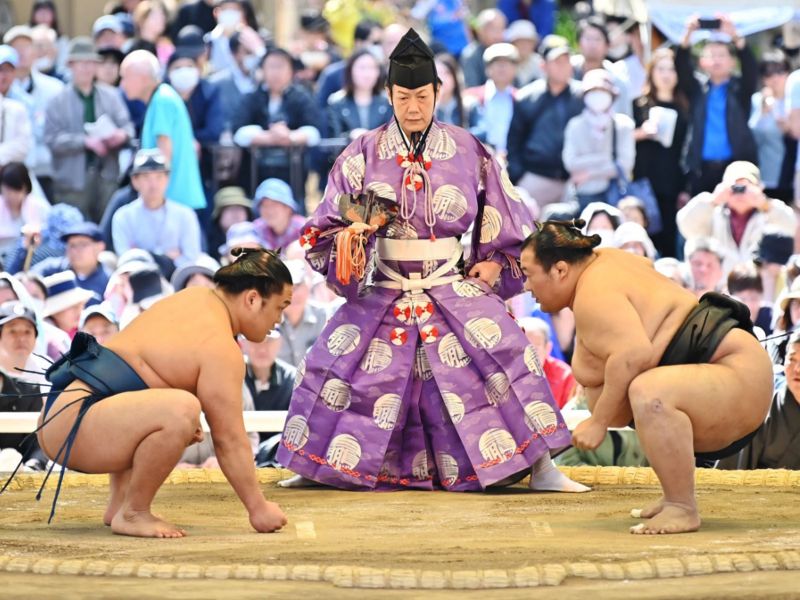
Courtesy of JRailPass.com
Sumo wrestling is Japan’s national sport and has a long history dating back to ancient times. Sumo matches carry traditions and rituals of Japanese culture. The wrestling part of the match is actually really short and it includes singing, salt-tossing, and foot-stomping. A time to enjoy Sumo is to attend a professional Sumo wrestling tournament where crowds get really passionate during the matches. Sumo wrestling has six tournaments with each tournament lasting fifteen days. It’s held each year in four different cities, including three tournaments in Tokyo and one in Osaka.
If you are willing to experience the matches (patience is key), each Sumo tournament day is long. It starts with the lower-ranked wrestlers in the morning and most spectators show up in the afternoon to watch top-ranked wrestlers compete. If you want to purchase tickets for sumo tournaments, they go on sale over a month in advance with an option of buying them from wherever you are before heading to Japan. Once you know the schedule of the tournaments, it’s best to book them right away as they sell out fast.
Click here to check availability and prices for Sumo Tournaments
Expert Tip: If you’re in Japan and it’s during a time when sumo tournaments aren’t available to spectate, some sumo stables or houses where the sumo wrestlers live and train–allow visitors to come and view morning practice sessions. The Sumo Stables are an option if you are looking for cheap things to do in Tokyo. If you want to guarantee a spot, book tickets as part of a tour.
Make Your Own Cup Of Noodles In Osaka

Courtesy of timeout.com
Japan has a variety of food choices, but one thing that is interesting is being able to make a personalized cup of noodles. The Cup Noodle Museum gives you that experience. There are two locations: Yokohama and Osaka. The museum takes you into the history and evolution of the cup noodle through time, and the process of making a cup of noodles. It’s family-friendly, so it’s definitely a fun place to take kids to. You’re provided a noodle container that you can paint and draw on, you go through the process of making your cup noodle soup, and viola! It’s ready to eat. You can either take it to go or sit at available tables to enjoy your noodle creation. After you finish eating, you can wash out your cup and take it home as a souvenir. The museum is free to enter but to make a cup noodle, it costs about $3 per cup. Both locations are accessible by Japan’s public transport.
Kyoto
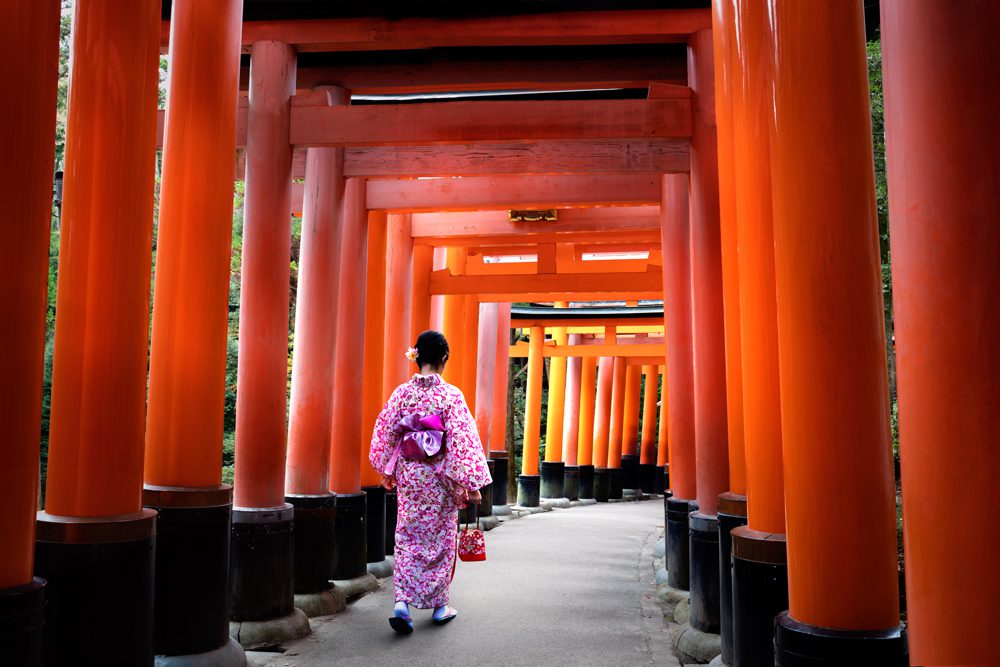
Courtesy of Global Trotting at Goway.com
Kyoto is known to be the cultural capital of Japan and a popular tourist destination. It is home to a number of Buddhist temples, Shinto shrines, palaces and gardens.
Transport: Buy the ICOCA & Haruka cards to get discounts for the train that takes you from Kansai airport to Kyoto. It’s 1,600 yen for the JR Haruka train, one-way, plus 2,000 yen for a ICOCA prepaid card. It includes a refundable 500 yen deposit and 1,500 yen balance that you can use on trains and buses in Kyoto. It takes about one hour and 15 minutes from the airport to Kyoto.
Where to stay: People usually stay in Hotel Gimmond, which is not as costly. It’s fairly known to be a 10-minute walk from the Gion district, and a couple of stops from Kyoto’s main station on the Karasuma line.
If you only do one thing: Don’t let temple fatigue set in before you’ve seen the Fushimi Inari shrine. This massive Shinto shrine complex is filled with opportunities for amazing photos. Visitors say if you keep climbing, you’ll end up passing several smaller shrines. Pontocho and Kiyamachi street, Ninen-zaka and Sannen-zaka – two iconic Kyoto lanes that are busy with souvenir shops which are full of character and fun shopping experiences. Traditional dance performances by maiko’s and geiko’s (geisha’s) at Gion Corner are usually jam-packed with spectators. People are packed in on tatami mat seating, but it’s all about the experience. For drinks, A-Bar and Star Bar in Pontocho are known to have fantastic cocktails and Japanese whisky.
Japan is filled with things to do, see, eat, and explore. It’s a fascinating and tradition-filled place to visit, especially while visiting these hot spots in Japan.


